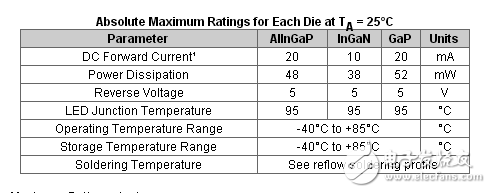
资料下载

这款ChipLED方案消费,工业应用
这款ChipLED方案消费,工业应用
虽然芯片LED首次进行了大约10年前,为满足小型、低成本、和背光键盘,手机和其他消费类电子产品组装方便的要求,这些微小的装置被设计成白色家电、工业测量系统、控制系统、办公设备、计算机及外设(提供标志照明和状态指示)。
“其中一个主要的原因是因为芯片LED使用他们非常小,占用非常小的电路板空间,”Francis Nguyen说,欧司朗光电半导体公司的高级产品营销经理LED在森尼维耳,CA.在选择这款ChipLED,设计师要看多少它占用的空间,然后再看看亮度、颜色和技术。”
随着芯片LED,设计师没有对包大小、颜色或亮度的妥协。芯片LED结合行业标准封装尺寸(0402, 0603,0805,和1206)具有高的光输出,一系列的颜色,和一些包装的选择,提供更大的设计灵活性。芯片LED也可在双向或三颜色,但是这需要更多的电路板空间。

Like other LEDs, chipLEDs are based on AlInGaP, GaP, and InGaN process technologies. AlInGaP and GaP LEDs are available in red, orange, amber, and yellow-green, while InGaN-based LEDs offer blue and white colors. These devices typically are available in top-mount, right-angle, and reverse-mount packaging options. Top mount is the most commonly specified due to its ease of use.
In general, GaP-based LEDs are the least expensive because of their lower brightness. For industrial applications, where color is not the primary driver, designers can choose a lower-cost GaP LED. The blue and white LEDs are generally the most expensive and are typically used as key product differentiators, meeting consumer expectations for a “cool” effect. Both AlInGaP and GaP LEDs offer a low forward voltage of about 2.1 V at 20 mA, while InGaN LEDs supply a higher forward voltage of about 3.2 or 3.3 V.
声明:本文内容及配图由入驻作者撰写或者入驻合作网站授权转载。文章观点仅代表作者本人,不代表电子发烧友网立场。文章及其配图仅供工程师学习之用,如有内容侵权或者其他违规问题,请联系本站处理。 举报投诉
- 相关下载
- 相关文章





